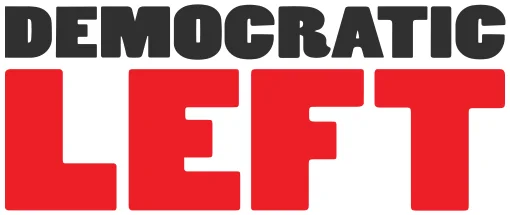

DSA Electeds Arrested Outside Immigration Court, Labor Support Mapped, and More
Chapter & Verse: a summary of chapter news for September 2025
The post DSA Electeds Arrested Outside Immigration Court, Labor Support Mapped, and More appeared first on Democratic Left.
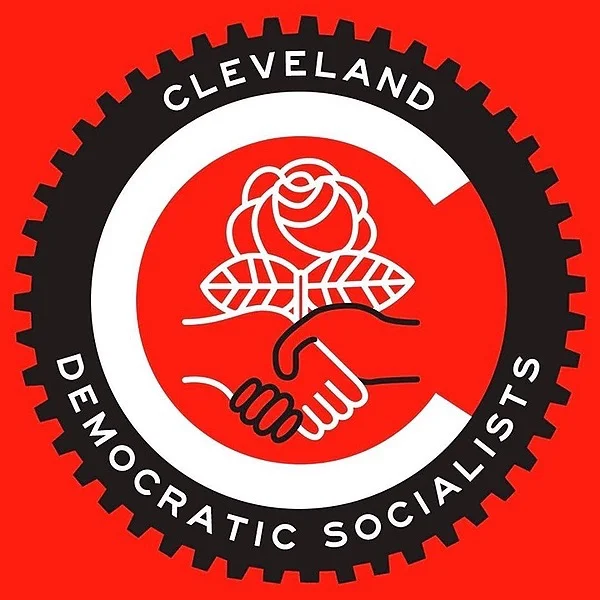

Caucuses in Cleveland DSA
Author: Julie C
The purpose of this piece is to notify Cleveland DSA members that there are now two local caucuses in our chapter and to give some brief history of internal politics in our chapter from a personal and limited perspective. These caucuses do not hold any formal positions of power within our chapter, and in fact are not “officially affiliated” with DSA Cleveland, but they were created in order to bring comrades together based on shared identities and vision.
The Black and Brown (B&B) Caucus was announced at or around the time of the June 2025 General Meeting. Inspired by Detroit DSA’s Black & Brown Alliance, as well as DSA’s national Multiracial Organizing Committee, the purpose of the B&B caucus is to bring together members of color and focus on ways to increase our diversity within the chapter, and working class power in Northeast Ohio’s communities of color. The caucus is not exclusive to members of color and there is no formal leadership or approval process for planning events for the B&B Caucus. If you are interested in this caucus, please reach out to Shay or Emma B on our member Slack.
The Praxis Caucus was announced at the September 2025 General Meeting and its Points of Unity can be found here. This caucus was formed with the intention of bringing members together to form a long-term and proactive vision for DSA in Cleveland and the surrounding areas. While the founding members have ideas on where to start, the current goal is to bring more members together to help develop the vision for our chapter in a way that aligns with our Points of Unity. All Cleveland DSA members are welcome to join meetings and events held by Praxis. If you are interested in this caucus, please reach out to Justin E or Julie C on our member Slack.
Background
When I joined Cleveland DSA (fall 2020), our chapter was very focused on local issues and local organizing. We were not fully plugged into the national org structure or any particular working group/committee in any serious or noticeable way. Also, from my perspective, while there were some political differences among comrades, our membership seemed rather homogeneous and came to consensus regularly. The most obvious difference was the approach to electoral politics and our biggest political “battle” was whether or not to endorse Nina Turner in 2021. This issue drew our largest General Meeting crowd at that time (over 60 members) and the motion failed with about 63% of the vote (it needed 66%).
Since then our chapter has experienced sizable growth in our membership which has naturally magnified the differences in perspective of how to achieve our shared goals. The national organization is more visible and connected to the work that we do through the use of resources available to us as well as some of our members being plugged into the work of different national committees. We also have at least close to a dozen members who belong to various national caucuses. At our October 2024 General Meeting, we passed a much more rigorous endorsement policy and that policy was put to the test this year. A substantial amount of work was put into a project proposal that would see a local DSA member endorsed in their run for city council. That proposal failed 64 nay vs 51 yea after a zealous debate at our May General meeting (5/8/25). The Praxis caucus formed with core members who voted yea on endorsement.
During and after the May General meeting, the political strategies among Cleveland DSA members have been more clearly outlined through internal debates and discussions. To be clear, DSA is a socialist organization. We believe in transitioning our society from capitalism to socialism and our “political” differences stem from what is the best way to do that. And even more specifically at our chapter level, what should our focus be in order to contribute to that outcome. While the differences in political opinion at times seem great, we are very much working towards the same goal.
- There are many lists and articles about the national caucuses but I am not linking any here since there is no “official” list that broadly summarizes them.
The post Caucuses in Cleveland DSA appeared first on Democratic Socialists of America.


6 questions to ask if your boss threatens to offshore your job
Offshoring threats are common but damaging to campaigns. Learn how secure the facility is and how important it is to the overall company structure.
The post 6 questions to ask if your boss threatens to offshore your job appeared first on EWOC.
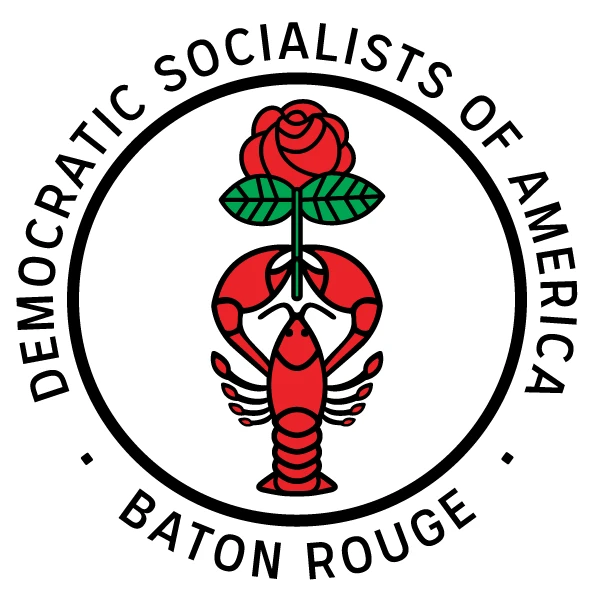

Statement on the Inexcusable Arrest of the Seven Members in Students for a Democratic Society at LSU
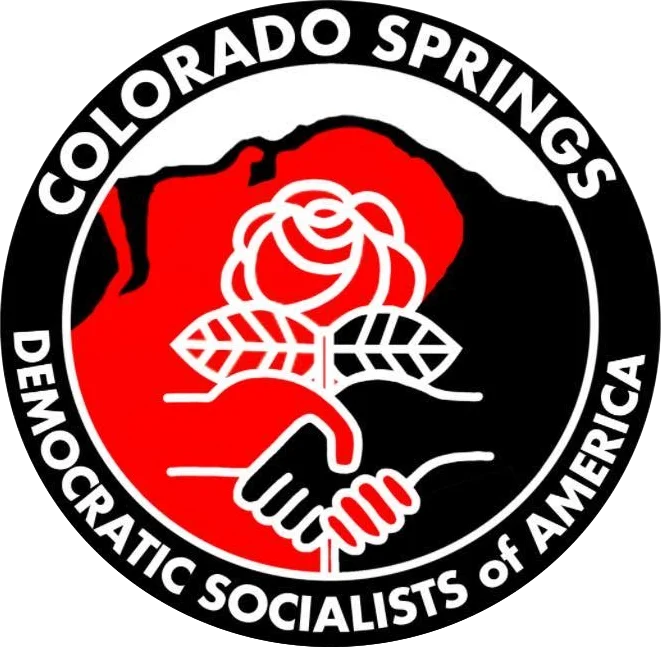

Colorado Springs DSA stands in solidarity with D11 School board candidate Charles Johnson against racist attacks
The Colorado Springs DSA strongly believes in the power of public education to empower and to liberate. We believe that the best people to decide how and what to teach are professional educators. We have been deeply troubled at the consistent interference from the extremist school board in District 11 of Colorado Springs as they deprive teachers of the very agency that allows them to excel. Their decisions are becoming ever more concerning. No novels in high school English classes. Pages physically cut out of health textbooks. And just last week we understand they cut from the curriculum the incredible abolitionist, writer, and orator Frederick Douglass.
Instead of cutting Douglass from the curriculum, we choose to live by his words, “I would unite with anybody to do right and with nobody to do wrong.” We choose to unite with Charles Johnson, a union-endorsed candidate for the school board in D11. We know that he is trying to do right, even as the allies of the extremists now vying for seats on the board play into the shameful, racist tradition of painting Black men as criminals by sending out a mass text showing the mugshot from Charles’s 2020 arrest. True to what we know of him, he was guilty only of, as John Lewis loved to say, making good trouble.
In 2019, a good friend of Charles, De’Von Bailey, was shot in the back and killed by the Colorado Springs Police Department. Charles organized for greater accountability for the department. At COS DSA, we know that Black history is fundamental to American history. Maybe if these extremists spent more time studying it instead of erasing it, they would know how predictable it was that Charles was then singled out for arrest by CSPD. But they don’t know, and we suspect they just don’t care.
We stand in solidarity with Charles Johnson. Charles has been a friend to many of us who are organizers and activists in Colorado Springs, and we know him to be kind and insightful. A product of D11 himself, his commitment to teachers and students in the district is an inspiration. As the Colorado Springs Education Association prepares to strike on October 8th, we call on everyone able to show teachers their support by joining them on the picket line and by standing with Charles and the rest of the union-endorsed school board candidates come the November election. Their only goal is one we all surely share; outstanding public education in this city we love.


Colorado Springs DSA stands in solidarity with the Sumud Flotilla
On 10/1/2025 the Global Sumud Flotilla was intercepted by the IDF while trying to deliver life saving aid to the Palestinians living under a blockade in Gaza. A coalition of organizers, humanitarians, doctors, artists, clergy, lawyers, and seafarers across 57 countries were just off the coast of Gaza, intending to break Israel’s blockade with much needed humanitarian aid, when they were violently intercepted by the IDF.
We condemn this act of violence against a group of peaceful humanitarians working to end the man-made famine imposed upon the Palestinians in Gaza. While Israel continues to actively and mercilessly bomb the Gaza strip to complete its goal of genocide and ethnic cleansing, the Global Sumud Flotilla was a beacon of hope to those waiting for much needed relief. The Global Sumud Flotilla poses no threat. They are unarmed and only carrying supplies needed by the population of Gaza such as baby formula, medical supplies, and food.
To meet a peaceful convoy of humanitarian aid with such violence and little regard for human life is appalling. The response from Italy to try and force the Global Sumud Flotilla to turn away, siding with the IDF and betraying their own citizens, is shameful. The United States is turning a blind eye to the U.S. citizens that have been kidnapped from the convoy while it continues to be involved with and enable the illegal and immoral actions of the illegal occupation known as Israel.
We are living in a moment which, when looked back on, everyone will say they have always been against these violent acts. We must keep hope, because to keep hope is to believe truly and honestly that Palestine will be free.
Israel must release all the hostages they have kidnapped from the Global Sumud Flotilla, they must ensure their safety, and they must allow aid into Gaza. As activist and arguably one of the most famous members of the Global Sumud Flotilla, Greta Thunberg, has said, “I'm not scared of Israel. I'm scared of a world that has seemingly lost all sense of humanity.” We must not lose our humanity and continue to uplift the Palestinian cause as it is just, it is moral, and it is freedom, not just for the Palestinians, but for all of us. Because none of us are free until all of us are free. We stand with the Global Sumud Flotilla, we condemn the violence and kidnapping, and we stand with the Palestinians in their hope to someday soon be truly free.
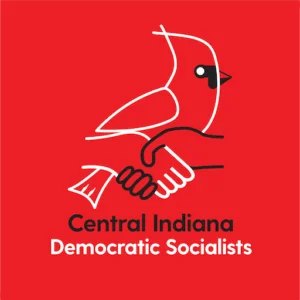
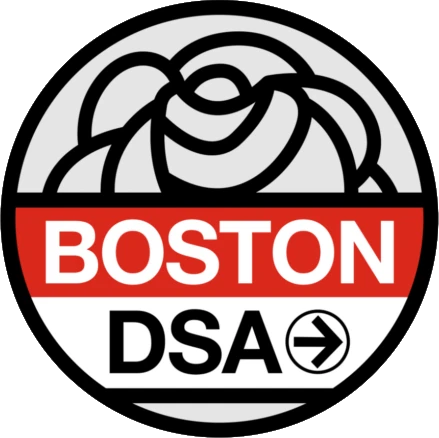

Starbucks Workers in Davis Square Join SBWU; Company Closes Store One Week Later

[[{“value”:”

By: Terence Cawley
SOMERVILLE, MA – The last few weeks have been tumultuous for the workers at the Starbucks store in the Davis Square neighborhood. On Wednesday, September 17, workers voted to join Starbucks Workers United. That made Davis Square the 650th unionized Starbucks store. One week later, on Thursday the 25th, Starbucks announced the imminent closure of hundreds of stores nationwide – including the Davis Square store. By that Saturday the 27th, the store had permanently closed. The new unionized location was gone.
Starbucks shuttered at least twenty locations in Massachusetts in this round of closures, including eight union stores. Besides the Davis Square store, the union store closures include the Harvard Square Starbucks, which unionized in May, and the store at 874 Commonwealth Avenue in Brookline, where the longest strike in Starbucks union history occurred over 64 days in 2022.
Brief History of Starbucks Workers United
Since Starbucks workers in Buffalo, N.Y. started Starbucks Workers United in August 2021, 650 stores (representing over 12,000 workers) have unionized. More than 200 of those stores joined Starbucks Workers United since February 2024. Despite these successes, not one of these stores has so far reached a collective bargaining agreement with the company.
Starbucks Workers United’s demands include changes that will enable more baristas to make a living wage, like higher pay, expanded healthcare benefits and paid leave, and more consistent scheduling. The union is also asking for stronger protections from racial and sexual harassment, as well as the enshrinement of current benefits in a contract so they cannot be revoked by the company later.
Starbucks initially opposed unionization efforts aggressively, leading to over 700 Unfair Labor Practices (ULP) filed against Starbucks with the National Labor Relations Board. The company reached an agreement with Starbucks Workers United in February 2024 to negotiate a “foundational framework” for contracts for union stores. Starbucks then failed to meet its own deadline to agree to this framework by the end of 2024, leading to workers at over 300 Starbucks locations going on strike on Christmas Eve for the largest labor action in company history.
Starbucks Workers United and the company entered mediation in February 2025. While the union has made some progress in contract negotiations, reaching 33 tentative agreements with the company, Starbucks continues to hold out on the workers’ three core demands: increasing worker hours to address understaffing and ensure workers qualify for benefits, increasing take-home pay, and resolving all outstanding ULP charges.
Starbucks Workers United claims on their website that Starbucks could finalize fair union contracts for less than the over $97 million Starbucks CEO Brian Niccol made for four months of work in 2024. Starbucks also covered the cost of Niccol commuting from his home in California to company headquarters in Seattle via private jet.
Organizing at the Davis Square Starbucks
Ben Levin has worked at the Davis Square Starbucks since April 2023. “From the beginning,” he has loved his coworkers. However, when Levin and his partner began planning to have children, he saw how his coworkers with families struggled due to a lack of consistent scheduling, subpar benefits, and low wages, not to mention the high cost of living in the Greater Boston area. Levin reported to Working Mass:
I was like, it would be so cool to be able to keep this job and start a family, and the only way I can see that that would be possible would be to fight back and win some of those things.
Some Starbucks customers had already encouraged Levin and his fellow Davis Square workers to unionize, but workers spent several years organizing the groundwork to reach the point where the store was ready for an election. Levin partially attributes this to the “stigma Starbucks manufactures in the workplace” around unionizing. “I understand why people are scared,” Levin said. “There are very material reasons for that.”
While Levin said management at his store did not engage in active union-busting, they did discourage workers from organizing through what he characterized as “trying to manufacture a sense of divisiveness and fear.” Despite the opposition, Levin found success building support for the union by connecting with his coworkers on a human level, listening to the challenges they faced at work, and providing accurate information about how a union could help with those challenges. According to Levin:
At the end of the day, everyone cares, everyone wants a better workplace. [You just] have to keep shoring up support and reminding folks why we’re in it together.
Levin also found inspiration in the accelerating momentum of the nationwide Starbucks Workers United effort. “It’s important to be connected to a larger movement,” said Levin. “This is a really powerful and kind of explosive labor movement- you know, [Starbucks Workers United] is the fastest-growing unionization effort in modern history.”
Additionally, the Davis Square workers had the support of Julie Langevin, a Starbucks Workers United staff organizer and former barista who has been involved with the union for over three years. She sees significance in the milestone of 650 unionized stores which Starbucks Workers United reached with the Davis Square election victory. Langevin said, on a hopeful note:
Every store that unionizes shows other baristas that they can do it too. 650 is a number some people thought impossible, but to us, it’s the proof that workers know what they’re worth and that they know when they fight, they can win.
Store Closures and What Comes Next
“It was sweet to celebrate,” said Levin. “It’s just hard to think about it not in the context of the closure.”
The official reason given in Starbucks CEO Brian Niccol’s statement is that the stores being closed are “coffeehouses where we’re unable to create the physical environment our customers and partners expect, or where we don’t see a path to financial performance.” In a separate statement, the company denied that unionization impacted which stores they closed. Still, Levin believes that, while Starbucks targeted stores without customer seating (like Harvard Square) and stores with lower revenue (like Davis Square) for closure, a desire to close union stores, particularly newly unionized stores with “the most fired-up workers,” may have been a factor.
While Niccol’s statement claimed that Starbucks would offer workers at closed stores the opportunity to transfer to other stores, as of September 30, Levin and his Davis Square coworkers have yet to receive any such offer. Fortunately, Starbucks Workers United has secured several protections for laid-off union members, including an extra month of health care benefits and the option to decline a transfer offer without losing their severance package.
“For some of us, this is our last week at Starbucks, but we still got to see the real material impact that the union is having,” said Levin. And even in the face of store closures and protracted contract negotiations, Langevin and Levin remain confident that the union will ultimately prevail. As Langevin said:
We have no other choice. Workers can either accept what the company gives them, or fight for a chance at a better life. And every time workers reach out and want to fight, it brings me hope and continued inspiration.
Supporters of Starbucks Workers United can show their solidarity and receive email updates about future actions by signing the No Contract, No Coffee pledge at https://sbworkersunited.org/take-action/. The union and its supporters have been canvassing for these pledges since summer to demonstrate to Starbucks how many customers will not cross the picket line if workers go on strike. To that end, Starbucks Workers United will hold a practice picket outside the Harvard Square Starbucks on Saturday, October 4 from 11am to 1pm.
“I absolutely think that a fire has been lit. We’ve had so many customers come in and express outrage at what’s happening to us, and ask what they can do to support us.”
“We’re escalating to something major,” said Langevin. “This practice picket is just the beginning of us flexing that power to company leadership, and there’s more to come.”
Terence Cawley is a member of Boston DSA.

The post Starbucks Workers in Davis Square Join SBWU; Company Closes Store One Week Later appeared first on Working Mass.
“}]]


Endorsement: Zoelle Lane, Fort Collins Council
Zoelle Lane is running for Fort Collins Council. Zoelle is an immigrant, union member, and renter running to tackle Fort Collins’ cost of living crisis and to empower its residents. One of her goals for office is to raise the minimum wage, which is long overdue!
Zoelle is part of a slate of candidates in the Socialist Cash Takes Out Capitalist Trash fundraising project!


On for Young and Old: How Boston University’s Resident Assistants Pulled Off a Double Strike
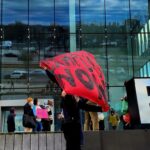
[[{“value”:”

By: Stacey Yuen and Alana Edwards, with contributions from Thomas Baker
This article was originally published in Long-Haul Magazine in its Winter 2025 Issue.
In Fall 2024, Boston University’s Resident Assistants (RAs) pulled off a rare, week-long strike in this new corner of the labor movement. Over seven days, Residence Life (ResLife) workers held their weight amid frazzled union staffers, hostile supervisors, and internal fracturing to strike during Fall move-in – a high-leverage period during which tens of thousands of students rely on RAs to move and settle into campus housing, with parents in tow. This was our second strike to win higher stipends, better protections against harassment, and paid health insurance for those not on family plans, in the context of negotiations for our first contract. On September 5, BU threatened to withhold RAs’ compensation, which comes in the form of housing and meals. Workers voted to end the strike shortly after this threat. To the surprise of some of us, BU increased their semesterly stipend offer from $1,000 to $1,700 a few days after the strike ended.
We are two rank-and-file members who helped organize BU RAs’ “Marathon Monday” strike in the Spring and the Fall 2024 move-in strike. As RAs, our job involves looking after the safety and well-being of more than 12,000 campus residents at BU. We work on-call shifts to respond to student emergencies, assist with housing needs, connect residents with resources, and plan community programs. Undergraduate students make up around 85% of our 300-member unit and graduate students account for the rest. Workers are compensated with housing and meal plans, although only half the unit received the latter before our strikes. The unit tends to be staffed by some of the most working-class, housing and food-insecure, and racially diverse students at the university. We are, therefore, relatively young and unversed in our dealings with both management and union. Our status as workers is also complicated by our other relations to the employer, as students and tenants.
In recent time, the “upsurge” of labor organizing in higher education has drawn much attention, along with the university’s exploitation of student debt through tuition and rent.1 Yet the organizing potential for many thousands of residential assistants around the country, who stand uniquely at the nexus of these trends, has been comparatively overlooked. We hope our experience can be instructive for RAs elsewhere.
A YEAR ON THE JOB (STACEY)
In August 2023, I began my two-week RA training program at Boston University. The sessions ran daily from 9am and ended in the evenings, occasionally as late as 10pm. I was 30, but was immediately made to feel 12 again. Our supervisor yelled at us to keep quiet, called us out if we looked at our phones, stared at us if we talked with each other, pulled us aside if we were five minutes late, and policed us into performing a charade of attentiveness during presentations, even as they droned on for hours with few breaks. Graduate RAs (GRAs) like myself, who have some responsibility to supervise and provide additional support to undergraduate RAs, were also roped into acting like their parents. If “our” RAs were not on time for a meeting, we were told, we had to retrieve keys from the office to enter their rooms and bring them down.
On the last day of training, all 300 fatigued and pissed-off RAs were made to participate in a treasure hunt and put on dance and chant performances as part of our “team building.” The audience and judges were our supervisors (primarily university staff) along with other administrators involved in student affairs. There was a fancy buffet, staff promotion announcements, and other such things. It was clear that part of our training involved being habitually infantilized and, for the GRAs, becoming some mix of parents and managers. This dynamic was weaponized against us when we attempted to fight for ourselves as workers.
“The worst is over,” I was told. “The job isn’t actually that difficult.” But, in my first week of duties, I found myself frantically setting up meetings to try and save a coworker’s job. They had not met academic grade requirements in the spring for continuing their RA role and were only informed about their predicament after they were rehired for the fall semester, already in full swing. “If they had told me at the end of spring,” my coworker said, “I could have just taken a summer course to boost my grade and everything would have been fine.” Instead, they were removed from the role and evicted from their on-campus residence with one week’s notice.
These experiences illustrate some of the unique realities of undergraduate labor. Undergraduate workers are “young,” not only in the literal sense, but in terms of how they ought to be treated by management. Managerial truisms like “they do not know what is good for them” infiltrate supervisor-employee relations. At BU, RAs must seek their supervisors’ permission to leave their residences for more than 24 hours even when they are not on call. My coworkers have been denied permission, without explanation, for something as innocent as attending a cousin’s wedding. And so, the pressure to perform obeisance to our supervisors becomes part and parcel of life as an RA.
But many RAs have been working multiple jobs since high school. One told me about a time they had a gun pulled on them while working as a fast-food restaurant manager in their teens; another complained about working under the hot Texas sun for $12 an hour, 12 hours a day, at an amusement park while a full-time high school student. Moreover, the nature of RA work, at its most intense, requires that workers attend to residents in crisis, to violent altercations, and even deaths. In the wake of one tragic student death on campus, my coworkers and I set up emergency discussions about how to respond to our residents and support one another in the face of confusing instructions and administrative oversight that had put workers in unacceptably difficult positions. It was apparent from those discussions that undergraduates’ maturity, wisdom, and workplace savvy are in abundance, whether administrators recognize it or not. But, of course, it’s in management’s interest not to.
“WE NEED TO PROVIDE THAT EDUCATIONAL MOMENT”
For management, ResLife workers’ youth and inexperience were reason enough to dismiss our organizing. We learned that BU was characterizing us as “ungrateful” and “aggressive” at the bargaining table. These complaints about our supposed childishness spilled over into daily interactions with our supervisors.2 RAs made several efforts to meet with supervisors about how RAs themselves understood the negotiations – as a path toward ending food insecurity and the necessity of juggling multiple jobs. We were unable, however, to have this middle layer exert any pressure upward; more often, it came down on us in the form of mounting tension at work. During the strike, some supervisors grew openly disdainful of workers with whom they formerly had friendly and warm relationships.
Ignorance and inexperience were also key tropes in the university’s public messaging. In an interview with the university paper about the administration’s plans to slap room and board charges on striking workers, the Dean of Students stated,
My goal is to educate everybody in the bargaining unit on the effects of withholding labor during negotiations or at any point in their role. We’ve heard from many RAs who are confused about what this means; they’re not getting clear communication. We need to provide that educational moment.3
Unfortunately, there was also a tendency for union staff’s attitudes to resemble management’s. Micromanagement in the form of repeated calling and texting workers to track progress on tasks was common. Behaving like summer camp counselors, staff typically led meetings in ways that resembled a Q&A rather than facilitating discussions among workers.4
STRIKING “MARATHON MONDAY”
In Spring 2024, workers began to feel the need to do something to gain more movement at the bargaining table. The annual drop in staffing over the summer and massive turnover going into the fall semester contributed to this sense of urgency. The only meaningful concession the university had made was to offer meal plans for all workers and RA and GRA stipends of $1,000 and $1,500 per semester, respectively. Prior to contract negotiations, only about half of workers were getting meal plans and a small number were receiving stipends of a few hundred dollars.
BU RAs decided to organize a strike over Boston’s Marathon Monday (“MarMon”) long weekend in mid-April. Apart from the anticipated additional workload (responding to noise complaints, investigating overly raucous parties, booking out keys to residents who lost them, etc.), that weekend was critical because it coincided with the university’s Family and Friends weekend, where ResLife workers take on additional shifts to engage and welcome BU’s visitors and patrons.
With “MarMon” as our target, the union began assessing strike-readiness. Union staff declared that we needed strike commitments from 270 of our 300 members in order to authorize a Strike Authorization Vote (SAV). This high bar was raised further when the staff required us to collect “selfie” photographs from coworkers as proof of their strike readiness and send them to staff, who would then mark those individuals as strike-ready on our wall charts.
The process of collecting these strike-readiness selfies caused several frustrations. First, many RA organizers were confused about the logistics and purpose of the selfies. RAs themselves asked important questions about how we were tracking them, whether they would be publicized, and how they were relevant to the strike. Organizers found it difficult to explain the rationale, making for extremely awkward interactions. The lack of clarity around the process, and more importantly, the hazy analysis of the relationship between the selfies on the one hand and our collective power on the other translated into demoralization and forced us to direct our energy toward sorting these questions out with each other and with union staff. Other essential efforts, like running small group conversations focused on strike preparation, power analysis, and inoculation faded into the background. We graduated from dancing and singing for our supervisors only to send selfies to our union staff.
Some organizers attempted to address the lack of bottom-up organizing and worker segmentation across campus by starting at the “neighborhood” level. ResLife workers are split across seven residential areas, also called “neighborhoods,” that are spread out around BU’s famously long and skinny campus. Workers do not interact across neighborhoods for most of the academic year. Until this point, neighborhood meetings were either poorly attended or nonexistent. This was true for both neighborhoods that relied on union staff’s initiative as well as those that attempted a more bottom-up approach. Three neighborhoods were almost totally disengaged. Meanwhile, attendance at bargaining and collective action team meetings flagged, in part because those meetings often felt uninspiring or inconsequential.
Some rank-and-file organizers began meeting and talking one-on-one and in very small groups with workers from different neighborhoods in an effort to build a core of cross-neighborhood stewards. One priority was engaging “organic leaders” from disengaged neighborhoods. Since we wanted more workers to take ownership of our workplace and union, we began with workers who were less habituated to staff-led decision-making. Within weeks, a new core developed, comprising about eight workers, three of whom were from previously disengaged neighborhoods. We also formed a group of about 15 rank-and-file neighborhood stewards and began sharing and discussing neighborhood organizing strategies and resources on WhatsApp.
Workers had no edit access to their own wall charts and could only leave comments. So we made our own chart, which decoupled strike-readiness from selfie commits. In the second half of March 2024, these rank-and-file leaders started strike assessments, focusing especially on three newly organized neighborhoods where staff had limited reach.
Our approach enabled us to gain traction within certain neighborhoods. As a result, it eventually became necessary to hash out our differences with the advocates of the selfie-based strike readiness plan. This led to an emergency meeting between rank-and-file leaders and the Local president, during which workers attempted to convince staff that we were ready to strike, whatever the selfie metrics indicated. We negotiated over the number of selfies that would trigger a strike authorization, ultimately compromising on a reduction from 270 to 170, or from 90 percent to approximately 56 percent of our bargaining unit.
Unfortunately, in the same meeting, we were less successful in winning over coworkers or staff to the idea of an indefinite strike. The staff proposal for a four-day “warning strike” over MarMon ultimately prevailed, hoping that the threat of a strike would win specific demands like back pay, better training provisions, and having masks in offices. Although unconvinced that this could force such concessions from the university, our new group oriented towards this action as a “practice strike” – i.e. a window to learn BU’s pressure points and tactics, as well as our areas of strength and weakness, in order to organize for an indefinite strike during the move-out window at the end of the semester. Within a mere week, led in large part by a surge in the newly organized neighborhoods, ResLife workers hit 92% assessment, 70% of whom were strike-ready, and another 12% leaning yes. The Local conducted our SAV, which passed comfortably: we were going on strike.
In hindsight, our approach had not adequately prepared for the realities of a strike. Our assessment of strike-readiness had fallen into the trap of getting as many Yes votes as possible at the cost of creating power-building spaces where workers could collectively build the necessary relationships, skills, and structures to navigate high-stress, high-stakes situations. There was no way we could critically discuss and respond to problems that arose in real time.
After the strike, rank-and-filers got together to discuss what we had accomplished, how we fell short, and where we were headed. The strike forced small victories. We began to receive masks at big meetings and our RA training the next academic year was much improved in terms of duration. By summertime, BU also provided air conditioning for all RAs and relocated summer RAs out of the notoriously stuffy rooms at Warren Towers. We had managed to strike roughly 90 percent of assigned shifts over the MarMon weekend. However, this overwhelming success was achieved, in part, by strike-ready workers swapping shifts with less confident workers. This, of course, was only possible because we were not on the long-term strike that we thought was necessary to win.
We also identified the picket line (combined with staff insistence that the strength of our strike could be gleaned from picket attendance) as a site of demoralization, alongside the pervasive feeling of just trying something disruptive and hoping that it might work, rather than formulating a defensible strategy based on a rigorous assessment of our leverage relative to our demands. Workers came away from this “warning” or “practice” strike less, rather than more, unified, coherent, and ready to fight. Our plan to organize for a subsequent indefinite strike was in tatters, and our experience defied the commonplace wisdom of successively escalatory action.
Finally, we reflected on the role played by union staff and considered possible ways of navigating our relationship with them differently in future. We discussed setting boundaries with them and crafted a memorandum that we then signed, presented to, and discussed with staffers. The memo emphasized that workers would maintain full control of our organizing strategy, timelines, goals, wall charts, and data. Staff were directed to refrain from repeatedly calling or texting us.
“I’VE NEVER SEEN THIS MUCH PARTICIPATION IN ALL MY TIME ORGANIZING”
By the end of the four-day MarMon strike, our major contract demands remained unmet and an agreement was nowhere in sight. Though much of the unit had turned over between the Spring and Summer semesters, a small core of committed rank-and-file organizers remained. Restrictive timelines regarding SAVs in the Local’s constitution made the prospect of launching a sanctioned strike incompatible with striking at the point of our highest leverage vis-a-vis the employer: namely, Fall move-in. Our core organizers decided therefore to organize towards a wildcat strike to begin on the first day of Fall semester move-in.5 Fortunately, the intensive RA training in August provided, in addition to much frustration with supervisors, an opportunity for RAs to discuss this plan.
During August’s RA 2024 training, core organizers called a general membership meeting that saw our largest attendance yet, with more than a third of the unit showing up. Importantly, there was a new energy and hunger in the room and this moment felt to workers like a high point in our campaign. In a vote, 94 percent of us agreed to start preparing for a move-in strike by talking with our coworkers who were not present. At the same time, these deliberations revealed concern about striking without support from the Local, as did a follow-up survey, filled by close to 80% of membership. However, the genuine swell of militant energy and collective deliberation from below was not lost on the Local’s staff or officers. Following a second meeting attended by more than half of the membership, one of them said, “I’ve never seen this much participation in all my time organizing.”
The conviction of workers pushing for immediate action even compelled the union to permit a constitutional amendment that would allow an SAV to pass quickly enough that we could strike at least part of move-in. The SAV stipulated that, in order to pass, we would need 80% of the entire unit to vote Yes and it is a testament to this swell of momentum that such an outcome was possible. We cleared this high bar and set out on strike. Here is the reflection of a core undergraduate organizer:
Even after participating in the MarMon strike, striking move-in felt wildly new, exciting, and empowering, although very challenging. The emotional rollercoaster lasted from strike preparations all the way through the strike itself. The morning of the walk-out, my racing heartbeat woke me up before my alarm could. I would regularly remind myself that even though fear and doubt would always seem more valid responses to the decision we were making, I was choosing to strike because I believed in the justice we were seeking, because I knew it was what was right and it would be worth it, and because I committed to myself and my coworkers that I would give it everything I could.
Throughout that day and each that followed, me and my coworkers exerted our collective power, took action, and formed new bonds of comradeship together. We stood by each other while we anxiously waited to be picked up by a strike train. Every chant I sang, every flyer I handed out, and every poster I attempted to put up was part of a larger struggle. I also fought for former coworkers, and every future and current 19-year-old RA who deserved better than the harassment my friends and I should have never faced. I even fought by doing TikTok dances in our ResLife polos with a friend I’d made just days before, in the most visible spot on campus, when we were too frustrated with each other to make another rushed decision.
We won the battles we faced simultaneously as individuals and collectively. We won as we met each other’s eyes when passing on the picket line. We won as security guards raised their fists and cheered with us as we walked out of campus’s largest dorm. And we won as students, parents, faculty and staff members, community members and leaders expressed their support through every email, tweet, and repost, through loud shouts of encouragement, through the moments they spent listening and calling on our behalf, even the smallest gestures of solidarity.
Notwithstanding such tireless efforts, confidence in the strike had begun to erode with the many sudden turns and lurches in the lead-up. Not a few who had previously agreed to strike pulled out. This was partly due to misinformation from Local staff, who were trying to rework restrictive internal policies to support our strike (we are the first RA unit in the Local). Core organizers were also under great pressure to make high-stakes decisions within a compressed time frame and tried to do so democratically. But the high tempo of informational and procedural changes, charged emotions, and clunky mass decision-making wore us out. Another challenge was that a large proportion of workers were brand new to the job, much less the union.
In the days that followed, ResLife workers went on what turned out to be a minority strike, with uneven numbers of workers withholding labor across neighborhoods during their move-in shifts. After the time lost in the back-and-forth with the Local, the strike ended up beginning on the fourth day of the week-long move-in and continued beyond it. Seven days into the strike, the university threatened to impose room and board charges for striking workers. Organizers, scrambling to respond, tried to assuage fears by saying workers would be more protected if more people struck. This was the wrong approach, especially as numbers dropped, because it divested workers of a sense of their own power when striking by sidelining genuine questions of strategy. It instead encouraged workers to find security in abstract metrics rather than to build structures, processes, and resources that would support a long-haul strike, one that might even have been powerful if concentrated in specific neighborhoods, despite relatively low overall numbers. There was widespread demoralization when some coworkers pulled out of the strike, creating a domino effect and the eventual collapse of the strike.
CONCLUSION
To workers’ surprise, BU increased their semesterly stipend offer from $1,000 to $1,700 after the fall move-in strike ended, despite its weaknesses. We think that the chaos and visibility of the strike meant that management, far from being unbothered, felt relieved that things did not get as disruptive as they might have. The many last-minute emergency meetings called by middle management, as well as the outbursts of various managers, suggested a workplace in panic. Although many of our shifts were successfully scabbed, our strikes caused logistical headaches for management because we do essential university labor in housing safely some 12,000 residents and patrons, who each pay upwards of $16,000 annually in room and board.
Importantly, both ResLife strikes occurred alongside a militant long strike undertaken by the university’s graduate workers. From March to October 2024, the BU Graduate Workers Union (BUGWU) ran the longest graduate strike in US history, pushing for demands such as a cost-of-living-adjustment tied to the rental market. When ResLife workers hit the picket, the university was also facing the prospect of another semester with BUGWU workers on strike. It is conceivable that the university, sensing this new worker militancy from RAs on the ground, was eager to settle the ResLife contract to foreclose the possibility of another strike like BUGWU’s. Less than a month after the RAs reached a tentative agreement, BU also made unusually quick concessions in a clear effort to reach a contract with BUGWU and end the strike. Their contract was eventually ratified in October.
Despite the persistent and frustrating condescension by our employer and, at least initially, our union staff, budding militancy within BU’s ResLife union delivered us to two strikes that pushed our Local and won us materially significant pay and compensation increases from the boss, as well as stronger protections and a relatively streamlined training program. From where we sit, the collective deliberation by rank-and-file workers, which dramatically changed the course of our campaign, was the real “educational moment,” impressing upon management and our Local staff certain lessons they won’t easily forget. After the strike, a staffer said to one of us that getting ResLife representation on the Local’s chapter executive board was critical to reforming the Local’s existing policies – clear recognition that we had something to teach the “old timers” as well.
Building up and layering this kind of militancy in both graduate and RA unions within the same university, in order to strategize and move in tandem, is a clear next step. While the connections between these struggles were glimpsed at BU, where some workers are members of both BUGWU and ResLife and where we share the same Local, we cannot claim to have fully developed the potential leverage of joint solidarity against the employer. This is no simple prospect, but appears newly in reach in the aftermath of our respective struggles, and might be pursued wherever undergrad and grad workers are in motion, whatever their organizational affiliation.
1 – See Notes From Below, Correspondences from the Upsurge, August 28, 2023, available at https://notesfrombelow.org/issue/correspondences-upsurge; Coalition Against Campus Debt, Lend and Rule: Fighting the Shadow Financialization of Public Universities (Philadelphia: Common Notions, 2024).
2 – For context, the university’s bargaining team included managers above our direct supervisor, who would receive reports on bargaining from above. Our direct supervisors, therefore, did not have direct access to bargaining sessions, and as a result, their understanding of negotiations was shaped heavily by management, especially as they were unwilling to consider our perspectives seriously.
3 – See Rich Barlow, “BU to Suspend Free Room and Meals for Striking Student RAs,” BU Today, September 5, 2024, https://www.bu.edu/articles/2024/suspended-free-room-and-meals-for-striking-student-ras.
4 – A comrade from the graduate worker union who sat in at a staff-led ResLife union meeting said he had not observed such condescension in a long time and felt he was in middle school again.
5 – The strike would be a “wildcat” insofar as we expected that it would not be authorized by the Local, even if it might be legally protected as concerted action under Article 7 of the NLRA, given that our demands were clearly “mandatory” subjects of bargaining and, this being our first contract, we had no pre-existing “no-strikes” provisions.
The post On for Young and Old: How Boston University’s Resident Assistants Pulled Off a Double Strike appeared first on Working Mass.
“}]]